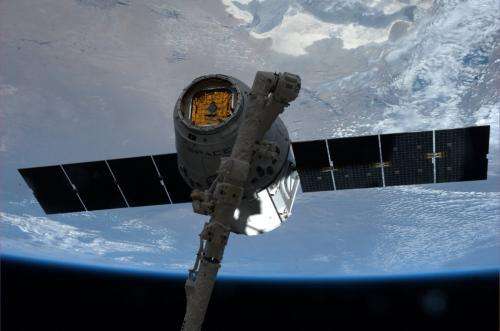Optical PAyload for Lasercomm Science (OPALS) launched to space station

When the SpaceX-3 cargo resupply mission launched to the International Space Station April 18, an experiment designed by NASA's Jet Propulsion Laboratory in Pasadena, Calif., was among the cargo headed to space.
The experiment, Optical PAyload for Lasercomm Science (OPALS), will test the potential for using a laser to transmit data to Earth from space. Instead of being broadcast on radio waves, data is packaged onto beams of laser light and pointed to a receiver station on the ground. Radio wave transmissions are limited by the speed they can transfer data, but beaming information packages with lasers can greatly increase the amount of information transmitted over the same period of time.
SpaceX-3 is NASA's third contracted resupply mission to the space station by U.S. company SpaceX of Hawthorne, Calif. SpaceX's Dragon spacecraft launched atop the company's Falcon rocket from the Cape Canaveral Air Force Station in Florida at 3:25 p.m. EDT.
SpaceX developed its Dragon capsule, the only cargo spacecraft currently servicing the space station with the capability to return cargo back to Earth, with NASA and now successfully has completed three missions to the orbiting outpost. Expedition 39 crew members captured the SpaceX-3 Dragon using the station's robotic arm at 7:06 a.m. Sunday, April 20. The capsule is scheduled to remain attached to the station until May 18. It then will return to Earth and splash down in the Pacific Ocean, off the coast of California. It will return samples from scientific investigations currently underway aboard the space station.
Provided by NASA




















